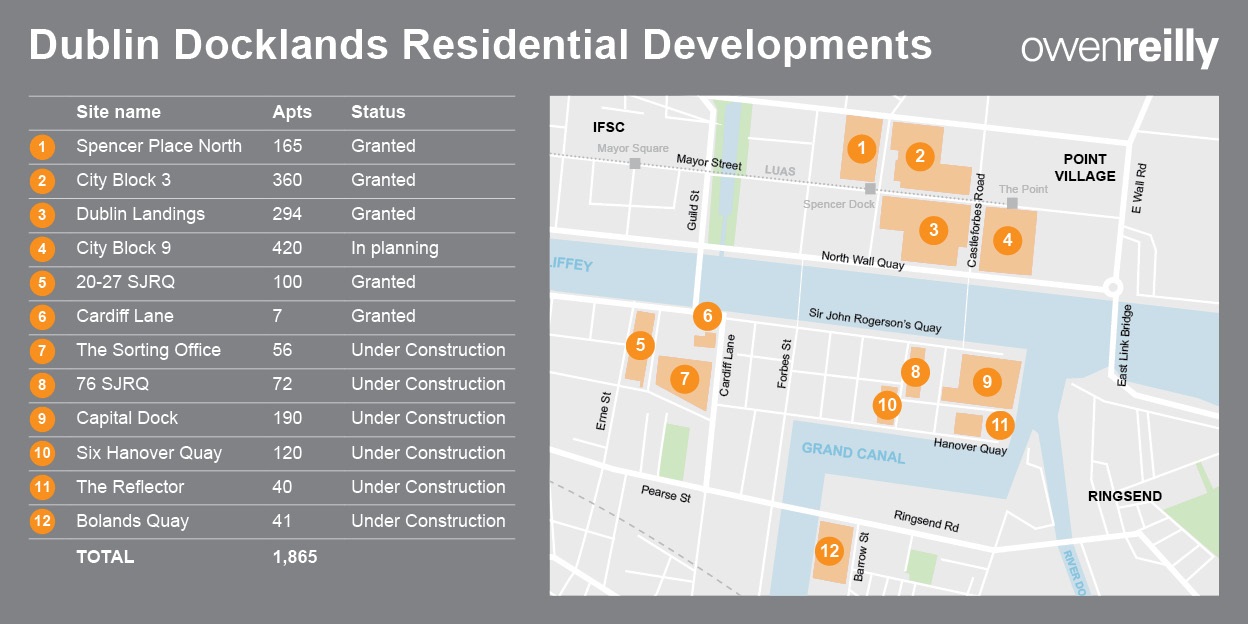Owen Reilly has analysed planning applications in the Docklands Strategic Development Zone (SDZ) and in particular the office to residential ratio. Our analysis gives an insight into what the Dublin Docklands will look like when completed.
Currently there is about 282,000 sq. m. of office space in planning or under construction, most of which will be completed within two years. In contrast, only 1,865 apartments are in planning stage or under construction (see map), of which about 630 is expected to be delivered within two years. This planned capacity will accommodate approximately 28,000 workers but only about 4,700 residents.
The total planned capacity of the SDZ will accommodate up to 2,600 apartments, or about 6,500 residents but also a lot more office space not at planning stage.
There will be enough office space in the Dublin Docklands to accommodate approximately 28,000 workers. In contrast the 2,600 apartments, based on current applications and building regulations, will only accommodate at best 6,500 dwellers. Quite simply as one can see in our case study of a recent planning application in the Docklands the capacity of the office space is much greater than the residential space.
This effectively means that most new employees in these offices will have to commute from other neighbourhoods, putting unnecessary additional pressure on our transport infrastructure.
Based on our analysis, the number of new apartments will only deliver a minute fraction of the accommodation required by the 28,000 new professional workers in the SDZ. This will, undoubtedly, put more pressure on the Docklands and city centre rental market.
We are aware that the Minister for Housing, Planning and Local Government Eoghan Murphy is putting the final revisions to the National Planning Framework Ireland 2040. We recommend that the regulations on residential density is increased significantly as a matter of urgency to avoid a complete supply/demand mismatch in the Docklands SDZ. If accommodation is out of reach then we lose people who make the economy work. This could prove detrimental to the potential future growth of major cities, not only the capital Dublin.




